Tomato Tan or Tomato Dry Acariasis: [Concept, Detection, Effects and Treatment]
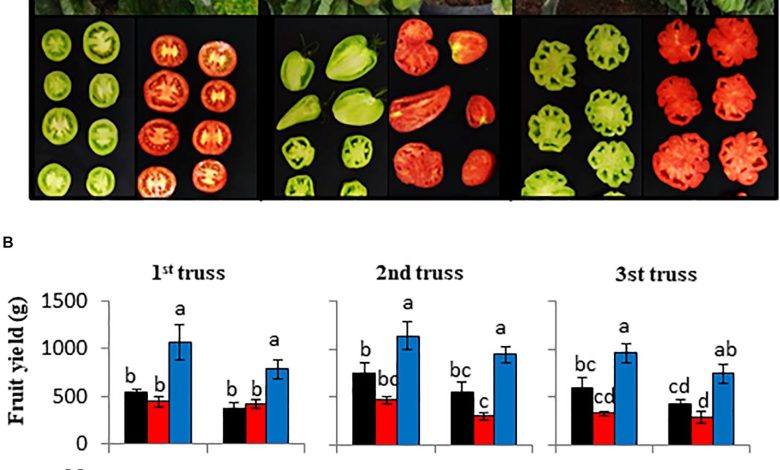
What is tomato bronzing or tomato dry mite?
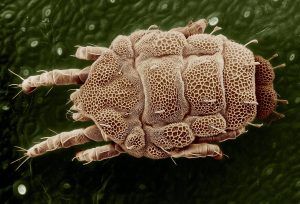 There is a particular mite with the scientific name Aculops lycipersici, also known as Vasates destructor and Phyllocoptes destructor, belonging to the Eriophyddae family, which moves with great self-confidence on tomato plants.
There is a particular mite with the scientific name Aculops lycipersici, also known as Vasates destructor and Phyllocoptes destructor, belonging to the Eriophyddae family, which moves with great self-confidence on tomato plants.
Its origin is located in Australia, but it has managed to spread throughout the world.Their behavior is aggressive because, despite their tiny size, they have a tremendous ability to suck plant cells in leaves and stems, until they are completely damaged, withering without being able to save themselves.
They do not leave wounds or galls, but can move freely around the parasitizing tomato plant, unashamedly living at the expense of their host.
Dried tomato plants
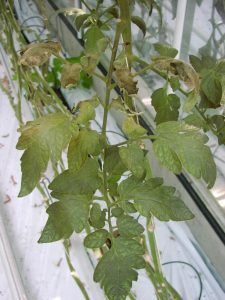 But there is also another serious threat to tomato plants, which can bring a brutal drought to the plants: the presence of the fungus or virus called tospovirus, caused by the presence of thrips, tiny beings that also infect plant tissues, with the terrible consequence that the leaves dry in a short time.
But there is also another serious threat to tomato plants, which can bring a brutal drought to the plants: the presence of the fungus or virus called tospovirus, caused by the presence of thrips, tiny beings that also infect plant tissues, with the terrible consequence that the leaves dry in a short time.
It is also very possible that another very powerful fungus has invaded the crop: Mildew, which generates oily-type stains on the leaves that will hijack the entire plant in a very short time.
How can we identify tomato bronzing or tomato dry mite disease?
Although the tomato bronze mite is caused by a tiny pest, very small in all stages of its development and are very difficult to see with the naked eye, it is possible to identify the following damages in the tomato plant.
- The leaves curl up and the undersides turn silvery.
- Afterwards the leaves will change to a brown color, until they wither completely.
- The damage is first evident in the inner part of the plant. They go from the bottom up, as the mites go up, in their food climb.
- When the plant has been completely invaded, the stems turn rusty brown and may even fall off and the leaves lose their trichomes or leaf hairs.
- The fruit of the plant will also suffer, since the skin becomes rough, reddish-brown in color and will have deformations that will make it lose commercial value.
Morphological characteristics
Regarding the morphological characteristics, behavior and biology of these mites, we have to:
- They are very small in all phases of their development, so it is difficult to observe them with the naked eye.
- They have an elongated body, similar to a torpedo, smooth in texture and segmented.
- The head and its oral structures are differentiated from the rest of the body.
- They only have 2 pairs of legs, more than enough to walk the plant from top to bottom. Other groups of mites have 4 pairs.
- Their eggs barely measure 0.005 mm in diameter. They place them on the underside of the leaves. They also hide them at the bottom of plants.
- As soon as laying occurs, the egg is pearly white, but when mature it turns pale yellow.
- They have two nymphal stages, they go through two stages, although they are also called larvae in the first and nymphs in the second. They pass in just one day, from one to another and measure about 0.1 mm.
- Adults, however, grow rapidly, in just 2-3 days. They may have a cream to yellowish-orange appearance.
- Males are slightly larger than females, but do not exceed 0.17 mm.
High temperatures favor the proliferation of these bugs, which are very dangerous for tomato plants.
Fungal attacks
In the case of attacks by fungi such as mildew and powdery mildew, the evidence of their invasive presence is:
- The leaves begin to dry, have a toasty appearance and end up falling off, being also very fragile on contact.
- It appears at the beginning or at the end of the crop, preferably drying the aerial parts.
- It occurs in spring and summer, when the ambient temperature begins to rise and the humidity also rises. And in rainy places, in these same seasonal periods.
- Another cause of the appearance of this fungus is due to the fact that the plant has not had sufficient aeration, either because it has been planted very close to other similar ones, or because its foliage is very dense.
What plants are affected by tomato bronzing or tomato dry mite disease?
As already explained, the mites were first seen in Australia, but today they affect any tomato crop, wherever they are grown.
Likewise, they affect other Solanaceae, although to a lesser degree of destruction.And fungi usually appear thanks to unhealthy practices for crops or environmental changes with marked moments of high humidity.
How to combat tomato tan or dry acariasis of tomato plants?
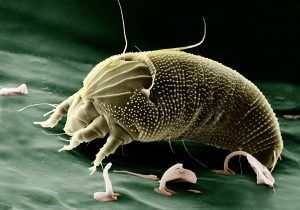 Prevention is the key to avoiding diseases in any type of crop, regardless of the species.
Prevention is the key to avoiding diseases in any type of crop, regardless of the species.
Although the ideal is to acquire those resistant to humidity, in order to avoid the presence of fungi in tomato plants, which are very susceptible to these attacks.
It is very important to look for seeds adapted to the climate where the crop will be made.
Aeration
Guaranteeing good aeration of the crop, maintaining a reasonable distance between each plant, prevents the proliferation of fungi, it is very convenient.
pruning
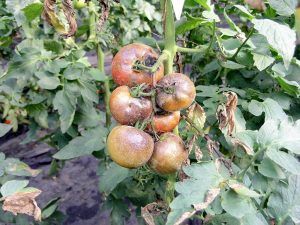 Perform regular pruning, where dead or dry leaves are removed and harmonious vegetative growth is guaranteed.
Perform regular pruning, where dead or dry leaves are removed and harmonious vegetative growth is guaranteed.
As soon as we see the first sick, dry leaves, they must be cut promptly to prevent the spread of the fungus, since if it reaches the trunks, the tomato plant cannot be saved.
In the case of pruning tomato suckers, open wounds cannot be left, much less during rainy periods, because they are a safe entry point for fungi.
Maybe you are interested: How to prune tomato plants
Irrigation
Irrigation must always be very careful: we should not touch the stem or leaves with water, either by drip or watering can method, it is necessary to avoid pointing towards the foliage, but go directly to the base of the plant, on the ground.
Pass
It is necessary to pay with a good fertilizer of organic origin, before and during cultivation, to improve microbial activity and help the plant always receive the nutrients it needs.
Maybe you are interested: How to pay tomatoes
Crop rotation
New tomato plants should not be grown in the same place where we harvest. It is necessary to rotate, not to continue with the same family, since the fungus will also repeat.Very effective homemade fungicides can be used to control the disease. A good recipe is as follows:
- Pour about 800 milliliters of rainwater (preferably always) into a bucket and mix with 200 milliliters of skimmed milk, in order to make the most of the salts rich in potassium and phosphates and the amino acids present. All together with lactic acid, the best fungicide.
- Immediately add 20 grams of sodium bicarbonate for each liter of the mixture, which has great healing and disinfectant power.
- Then mix in a sprayer, shaking the mixture vigorously.
- Apply for two days in a row, in the afternoon. And if it rains, all the more reason it should be thrown on the surface of the tomato plants.
- Then the remedy will be spaced out, applying it every 15 days, on average.
What are the best products to eliminate tomato bronze or dry mite disease from tomato plants?
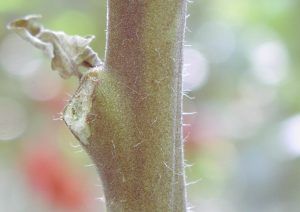 One of the most effective chemical products against pests such as tomato bronze mite disease is: Spiromesifen, a compound of 2-mesityl-2-oxo-1-oxaspirol[4,4,]non-3-en-4-il 3,3-dimethylbutyrate.
One of the most effective chemical products against pests such as tomato bronze mite disease is: Spiromesifen, a compound of 2-mesityl-2-oxo-1-oxaspirol[4,4,]non-3-en-4-il 3,3-dimethylbutyrate.
It must be applied according to the instructions provided by the manufacturer in the package insert, since in the long term it can negatively impact aquatic organisms and cause adverse effects in the marine environment.
So they should not be allowed to reach bodies of water. It is an effective inhibitor of Acetyl-CoA carboxylase, capable of interfering with lipid synthesis.In the case of mites, it tremendously affects fertility.
It acts on Tomato dry, Aculops lycipersici, tomato bronzing, whiteflies , cotton whitefly , courgette silverfly, pepper white spider, red spider, among other bugs that cause evils that can ruin many solanaceous crops.

![Photo of Banderillas: [Cultivation, Irrigation, Care, Pests and Diseases]](https://www.complete-gardening.com/wp-content/uploads/2021/06/Banderillas-390x220.jpg)
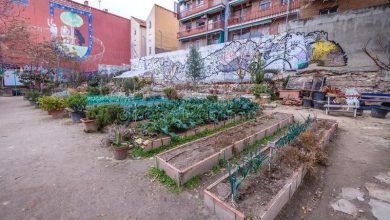
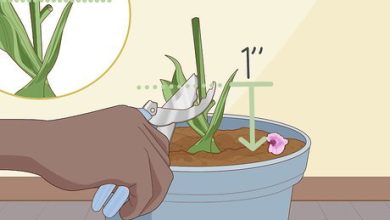
![Photo of 23 Resistant Outdoor Plants: [List, Characteristics and Care]](https://www.complete-gardening.com/wp-content/uploads/2022/08/23-resistant-outdoor-plants-list-characteristics-and-care-390x220.jpg)